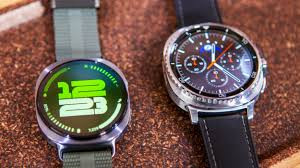iPhone 18 Pro Models May Introduce New Design, Potentially Phasing Out Dynamic Island

IIE DEGETAL DESK : Apple appears to be preparing for a major shift in the design of its future iPhones. If recent industry reports and analyst predictions are to be believed, the iPhone 18 Pro models—expected to launch in 2026—may come with a fresh new look that eliminates the need for the much-discussed Dynamic Island, thanks to breakthroughs in under-display technology.
Since its debut in the iPhone 14 Pro lineup, the Dynamic Island has served a dual purpose: it houses critical sensors such as the front-facing camera and Face ID components, while also offering interactive software elements for tasks like music playback, call handling, and app notifications. Its launch was widely praised as an elegant solution to the static notch design seen in previous generations. However, as with most technological solutions, what once felt futuristic may soon become obsolete.
Industry analyst Ming-Chi Kuo, known for his accurate predictions on Apple’s hardware pipeline, recently claimed that Apple is working on a full-screen design that could be ready in time for the iPhone 18 Pro. According to Kuo, Apple is on track to place both the Face ID system and the front camera beneath the screen. This would result in a truly uninterrupted display surface—something Apple has been striving toward for years.
This under-display technology, if implemented successfully, would render the Dynamic Island unnecessary for Pro models, freeing up more screen real estate and simplifying the user interface visually. Apple is reportedly confident in the performance of this advanced screen integration, which has long been in development and tested through multiple prototypes. While earlier attempts by other smartphone manufacturers have seen varying levels of success, Apple is known to wait until the technology reaches a certain maturity level before incorporating it into a mass-market product.
The concept of a truly edge-to-edge screen has been a long-term design ambition not just for Apple, but for the entire smartphone industry. However, technical barriers have made that goal difficult to achieve. Face ID, Apple’s sophisticated facial recognition system, relies on a series of infrared sensors and dot projectors that are far more complex than a simple selfie camera. Hiding those components under a functioning display without compromising performance or security has proven to be a major engineering challenge.
Nevertheless, Apple’s investment in display and sensor innovation might finally pay off by the time the iPhone 18 Pro is ready to ship. If realized, this new design would mark one of the most dramatic visual changes in the iPhone lineup since the introduction of the iPhone X in 2017.
It’s worth noting, however, that this design overhaul is expected to be limited to the Pro models only. Non-Pro variants of the iPhone 18 are likely to retain the Dynamic Island, at least temporarily, as Apple tends to stagger the rollout of advanced features across its lineup. This would continue the company’s strategy of differentiating its premium models with exclusive hardware and design elements, incentivizing upgrades to the higher-end versions.
In parallel with these developments, Apple is also refining the current Dynamic Island implementation. Leaks around the iPhone 17 Pro Max suggest the feature will become smaller and less obtrusive, thanks to the introduction of metalens technology—a new type of lens that is flatter and more compact than traditional optics. These changes hint at Apple’s interim strategy to gradually reduce the footprint of visible sensors while it works on the more ambitious goal of hiding them altogether.
The removal of the Dynamic Island could also have software implications. Currently, Dynamic Island hosts a range of animated and interactive elements that augment user experience. If Apple does indeed retire the feature for the Pro models, it will likely require rethinking some of the iOS interface mechanics. However, Apple’s deep integration of hardware and software gives it a unique edge in executing such transitions smoothly.
While we’re still over a year away from the potential launch of the iPhone 18 series, these early leaks and analyst insights have already stirred excitement and speculation among tech enthusiasts. A bezel-free, full-screen iPhone without any notches or islands would represent the culmination of over a decade of design evolution, bringing Apple closer than ever to its original vision of an all-screen device.
Until then, Apple is expected to continue iterating with the iPhone 16 and iPhone 17 models, likely using them as platforms to refine camera quality, processor performance, and battery life, while setting the stage for the bold transformation expected with the iPhone 18 Pro.
For now, consumers can only wait and watch as Apple’s design philosophy continues to push the boundaries of what’s possible with smartphone hardware. If the predictions come true, the iPhone 18 Pro could be more than just another annual upgrade—it could be a true reinvention of the iPhone experience.
You might also like!













